Electronic enthusiasts net note: 霱, yù, have the meaning of Ruiyun, Qingyun
After swimming in space for less than a year, the particle data sent back by "Wukong" is enough for each Chinese to "distribute" to one.
On December 17 last year, the first star of the China Science Satellite Series, the Dark Matter Particle Detection Satellite "Wukong", was successfully launched at the Jiuquan Satellite Launch Base. It used its "eyes of the eye" to help scientists find the mysterious dark matter in the "invisibility cloak".

â–² Dark matter particle detection satellite payload 20 base test team
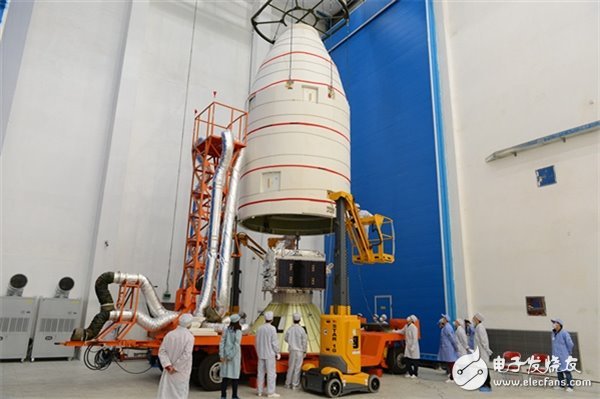
â–² satellite buckle cover
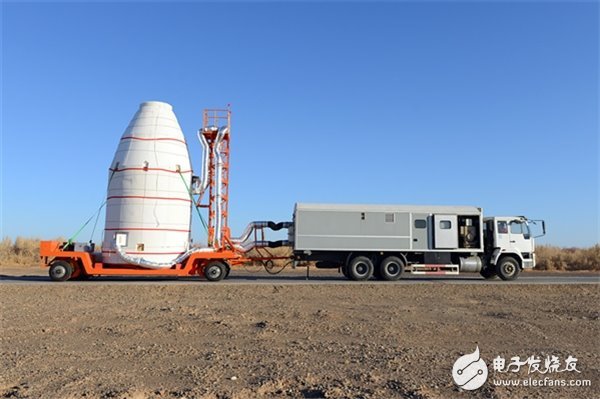
â–² satellite transition

â–² before launch
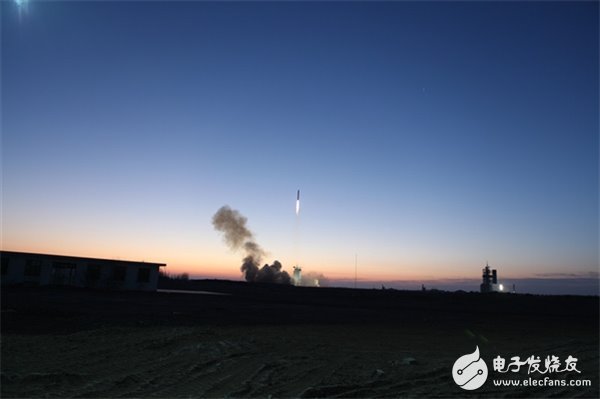
â–² launch
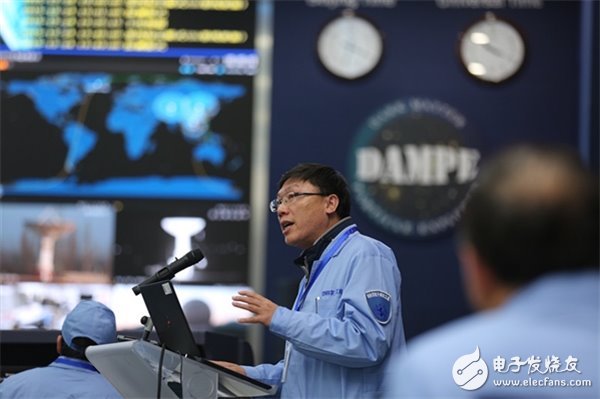
â–²Introduction to satellite work
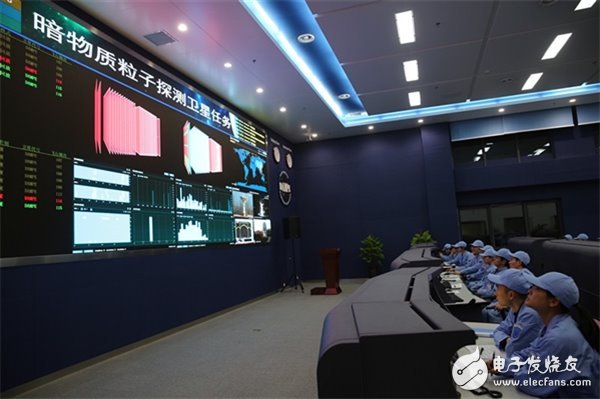
â–² payload working condition monitoring
It has 353 days of normal operation, 5,382 orbits of flight, stable posture, and has completed coverage of the entire day. A total of about 1.6 billion cosmic rays have been detected. This is a perfect transcript from Wukong as of press time.
Looking at the "arc" of the "Wuk" painting into the New YearIn fact, the perfect performance of "Wokong" is even beyond the expectations of scientists. Among the four payloads, the plastic scintillator, BGO calorimeter, and neutron detector all work 100% normally, and the 99.85% silicon track detector works normally, which is also significantly better than the original 97.5% index.
Despite this, the Wukong research team did not dare to slack off. They continually optimize the on-orbit calibration scheme to achieve reliable calibration of each detector detector in the shortest possible time and make full use of this data to accelerate the development of physical case reconstruction software.
For Fan Yizhong, deputy chief designer of the Dark Matter Satellite Ground Science Application System and researcher at the Purple Mountain Observatory of the Chinese Academy of Sciences, the Spring Festival of the Monkey Year 2016 is particularly memorable.
“In order to be able to reunite with my family, the whole team broke out with amazing potential during the period of the year.†Fan Yizhong recalled, “At 2 am, the data processing center is still full of seats. The next morning, I went to the office and there were several people. Colleagues are still working, and some colleagues are resting on the office chair."
With this momentum, the young scientists of the scientific application system finally completed their software upgrade tasks on the 29th of the New Year, and returned to their hometowns for the New Year.
People can't rest in a computer cluster. In the New Year's Eve, Chang Jin, the chief scientist of the Dark Matter Satellite and the deputy director of the Purple Mountain Observatory, took the lead to stay in the office, receive, check, and process data, and eat dinner with colleagues. Despite the lack of joy to reunite with relatives and friends, in their view, watching "Wukong" on the screen draws a large arc into the Lunar Year of the Monkey, and another deep affection.
As time goes by, the performance of "Wuk" is getting better and better. After the three-month on-orbit test was over, all the experts who participated in the review scored 100 points for its performance. "This is very rare in satellite testing. The hundreds of 'emergency solutions' we have prepared are useless," said Wu Jian, chief designer of the Dark Matter Satellite Ground Science Application System and a researcher at the Purple Mountain Observatory.
"Central Kitchen" towards five nightsNowadays, ground data reception, physical case reconstruction, processing analysis and other work have entered normalization. "Wukong" turns around the earth 15 times a day, more than 40,000 kilometers per lap, and runs more than 600,000 kilometers a day. When it passes through the ground data receiving stations such as Sanya, Kashi, Miyun, etc., it also reports the work and transmits the observation data back. These data were first summarized in the ground support system of Huairou, Beijing. After simple processing, they were transmitted to the scientific application system of the Purple Mountain Observatory.
For researchers, these data, called 1B, are the best "food ingredients." The scientific application system of the Purple Mountain Observatory is like a “central kitchenâ€. The data “food†that Wukong continuously conveys will be processed here into advanced physical information for researchers to apply.
At 5 or 6 o'clock in the morning, it is normal to see whether the telemetry parameters are normal. At 8 o'clock, the satellite observation scientific data of the previous day is normal. Then, the calibration and reconstruction data will be started until the end of the day at 10:30. This is the daily work schedule for the “Central Kitchenâ€.
Dr. Li Xiang is one of the 22 monitoring staff in the “Central Kitchenâ€. "We work in a shift every day. It usually takes more than 10 hours to process the data of the previous day. It is very normal to work until 10:00 in the evening." Li Xiang told the Journal of the Chinese Journal of Science and Technology, the calibration and reconstruction of the data, actually It is a rather complicated process.
“Wolf†sends back 5 million particle information every day, of which only 0.1% is useful electrons, and the number of photons is much less. Therefore, in order to study the distribution of electrons and photons, it is necessary to eliminate information on cosmic nuclides such as protons of more than 99%.
Since "Go Kong", God has developed a habit: in the morning, you must check the summary report of the previous day's satellite data sent by the duty officer, and only check the complete data of the downloaded data on the same day and real-time processing. After the situation can sleep.
Open the new window of "China Power"Since dark matter may be present in any area, "Wukong" will scan all day for the first two years to detect the presence of dark matter. Two years later, based on the analysis of the full-day detection, it will conduct directional observations on the areas where dark matter is most likely to occur.
Chang Jin repeatedly told the research team: "The space project has too many uncertainties, and the cost of running the satellite is high. It is necessary to cherish all the observation data and maximize its potential."
The 1B data that completes the calibration and reconstruction becomes advanced data called "2A". The data will be distributed to the “DAMPE Collaboration Group†consisting of hundreds of scientists for data analysis. Among them, there are Chinese scientists from the Purple Mountain Observatory of the Chinese Academy of Sciences, the University of Science and Technology of China, the Lanzhou Institute of Chinese Academy of Sciences, the Institute of High Energy Physics of the Chinese Academy of Sciences, and foreign collaborators from the University of Geneva, the University of Perugia and the University of Bari.
After preliminary analysis, "Wukong" has made important progress in particle charge measurement, energy measurement, direction measurement, particle identification, etc., and fully realized or exceeded the design indicators.
"It seems that the data obtained by satellites are very solid. It is very meaningful to confirm or deny the existence of dark matter in the future." Jing Yipeng, an academician of the Chinese Academy of Sciences, said that as the data continues to accumulate, it is hoped that it will be available in the near future. Breakthrough results.
In order to be able to publish the first scientific achievements from “Wokong†as soon as possible, the entire research team is working intensely. "Dark matter detection is our main scientific goal, but our main goal is to work properly with satellites and correct calibration of detectors. This will ensure that we open a new window to observe the universe, and there will be new discoveries." .
Chief Scientist of Dark Matter Satellite, Deputy Director of the Purple Mountain Observatory of the Chinese Academy of Sciences, Chang Jin: Uncovering the mystery of dark matterA large number of astronomical observations show that the so-called common substances composed of protons, neutrons, etc. in the universe we live in, such as stars, planets, interstellar gas and dust, account for only about 5% of the total energy of the universe; about 27% Dark matter and about 68% of dark energy account for the vast majority of the universe's components.
Therefore, understanding the problems of dark matter and dark energy is an urgent and impossible task for us to understand the universe. The problem of dark matter and dark energy is a major problem facing contemporary physics, and breakthroughs on these two issues will likely lead the development of physics in the 21st century.
Existing research indicates that dark matter is likely to be a heavy particle that exceeds the standard model and participates in weak interactions. They interact very weakly with ordinary substances and therefore tend to be "dark". However, it is this weak interaction that gives us hope for the detection of dark matter particles. If we make a sufficiently sophisticated instrument, it is possible to capture very rare dark matter interaction events.
With the development of detector technology, today we can achieve a very low background direct detection in the underground laboratory - measuring the collision of dark matter particles and detectors, in the space for large-acceptance high-resolution indirect detection - Measure the remnants of self-annihilation or decay of dark matter particles.
At present, dozens of experiments in the world detect dark matter particles by direct or indirect methods. As the sensitivity gradually increases, the residual parameter space of dark matter particles becomes smaller and smaller, and humans may soon uncover the mystery of dark matter.
On December 17, 2015, China launched the first space astronomical satellite, the "Wukong" dark matter particle detection satellite. The primary scientific goal of the "Wolf" satellite is to detect the remnants of dark matter annihilation or decay by measuring the energy spectrum and spatial distribution of cosmic ray electrons and gamma rays with high precision. The scientific instruments carried by the "Wokong" satellites have the highest of three worlds: the highest energy resolution power, the widest observation energy segment, and the strongest high-energy particle identification skills, so it is expected to achieve important results in the indirect detection of dark matter.
The "Wukong" satellite detectors are in good working condition, with an average of about 5 million high-energy particles observed every day. Up to now, the instrument has been operating normally for 330 days, and a total of about 1.6 billion cosmic ray events have been detected. Now we are making good progress in particle charge measurement, energy measurement, direction measurement, particle identification, etc., and fully meet or exceed the design indicators. At the beginning of 2017, we will officially release the first scientific achievements of “Wokongâ€.
Mrl Lift,Traction Elevator,Dumbwaiter Elevator,High Speed Mrl Elevator
XI'AN TYPICAL ELEVATOR CO., LTD , https://www.chinaxiantypical.com